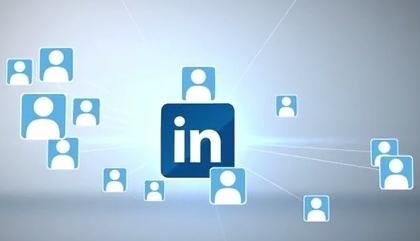What To Do With All Those Random LinkedIn Invites
July 1, 2016
When it comes to LinkedIn Invitations, LinkedIn is giving its users bad advice.

Especially if you want to generate more business or discover new sales opportunities using the platform.
Here’s the rub: By suggesting users only connect with people they already know, LinkedIn is actually doing the opposite of what makes the platform so powerful – the depth and breadth of your connection list.
Put simply, the more people you are connected to on LinkedIn, the more visibility and reach you have on the platform.
Show Up and Show Out
Here’s just one example: With 433 million members in 200 countries, LinkedIn has one of the planet’s most powerful internal search engines.
And the more people you’re connected to on LinkedIn, the better chance your profile has of showing up high on searches related to the products or services you provide.
(Note: If you haven’t already, now would be a good time to make sure you have the key ingredients of creating a killer LinkedIn profile in place!)
Think about it this way: If a Small Business Owner (let’s call him “John Doe”) hops on LinkedIn because he need to find a CPA in Chicago, John is likely to type “CPA Chicago” into the LinkedIn Search bar to see what results come up.
If you’re a CPA in Chicago, having those keywords (“CPA” and “Chicago”) in your LinkedIn headline, summary and profile sections tells LinkedIn’s Search Engine that your profile is a relevant result for John’s search.
However, LinkedIn will give preference to 1st and 2nd degree connections of John Doe, because in LinkedIn’s mind someone that John Doe knows (meaning a 1st or 2nd degree connection) is going to be more relevant.
So LinkedIn filters John Doe’s “CPA Chicago” search result in this order:
- Do any of John Doe’s 1st degree connections have those keywords (“CPA” and “Chicago”) in their profile?
- Do any of John Doe’s 2nd degree connections have those keywords in their profile?
- Do any of John Doe’s 3rd degree connections and everyone else have those keywords in their profile?
See how this works?
The more people you’re connected to (especially other Small Business Owners in Chicago), the better chance you have of showing up on the first or second page of search results that John Doe sees when looking for a CPA in Chicago.
And keep in mind, this is just one example of the power of your network’s depth and breadth on LinkedIn. There are many others (such as publishing content on LinkedIn or appearing in the news feed of your connections with status updates, comments, likes, shares, etc.) that I don’t have time to dive into here.
So Who Should You Connect With on LinkedIn
Unless the person inviting you to connect is an obvious spammer, you should accept his or her invite.
More important, you should be proactively searching for and connecting with key prospects in your niche or industry.
(Here’s an easy way to do it in just 5 minutes a day.)
Long story short, the more people you are connected to on LinkedIn, the better.
And, lest you fret, you can adjust your user settings to “protect” your connections so that nobody else can see or access them (even your 1st degree connections), along with your personal email, phone and so on.
Go ahead and connect with your competitors, too – they can see everything you’re doing on LinkedIn anyway. In addition, being part of a competitor’s LinkedIn network means now all of his or her customers are one step closer (as 2nd level connections) to getting to know you.
See how this works?
Go ahead and ignore LinkedIn’s advice, and get busy accepting all those random invites!
Digital & Social Articles on Business 2 Community
(11)


